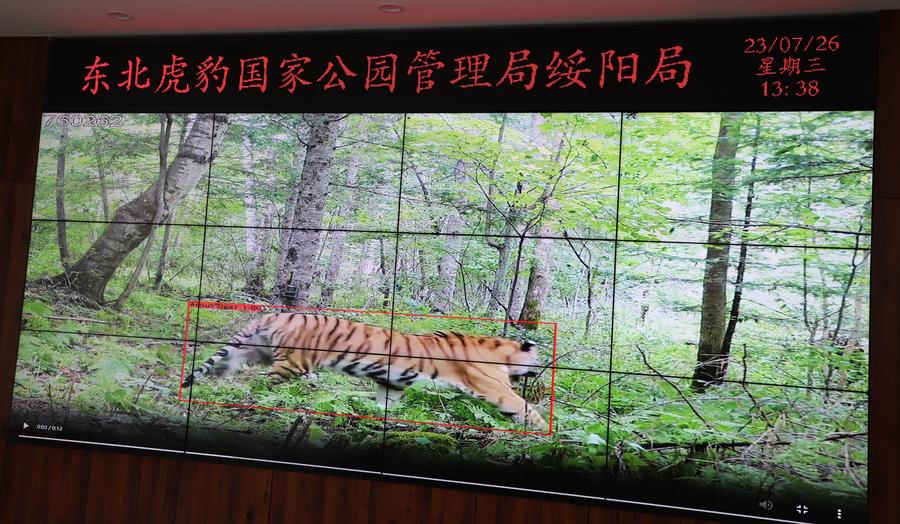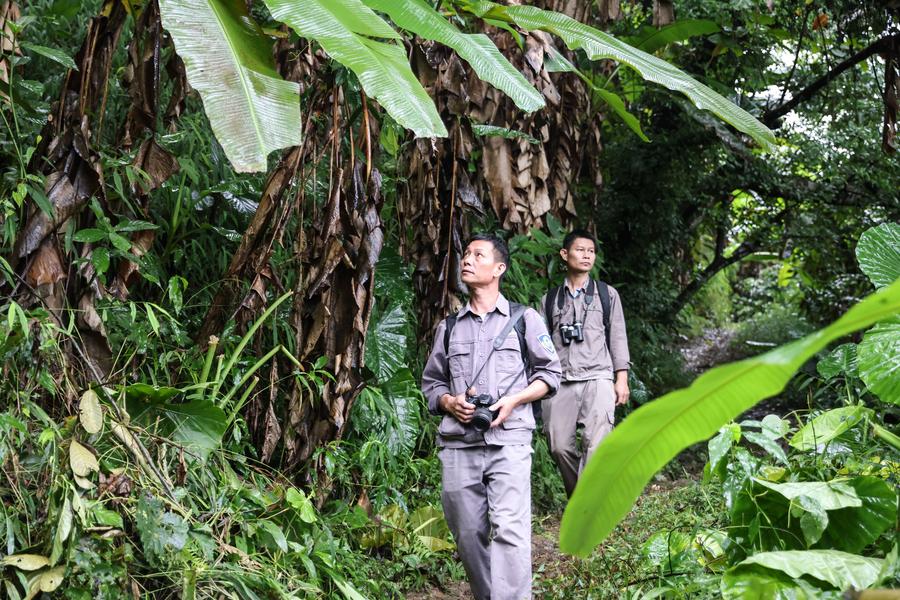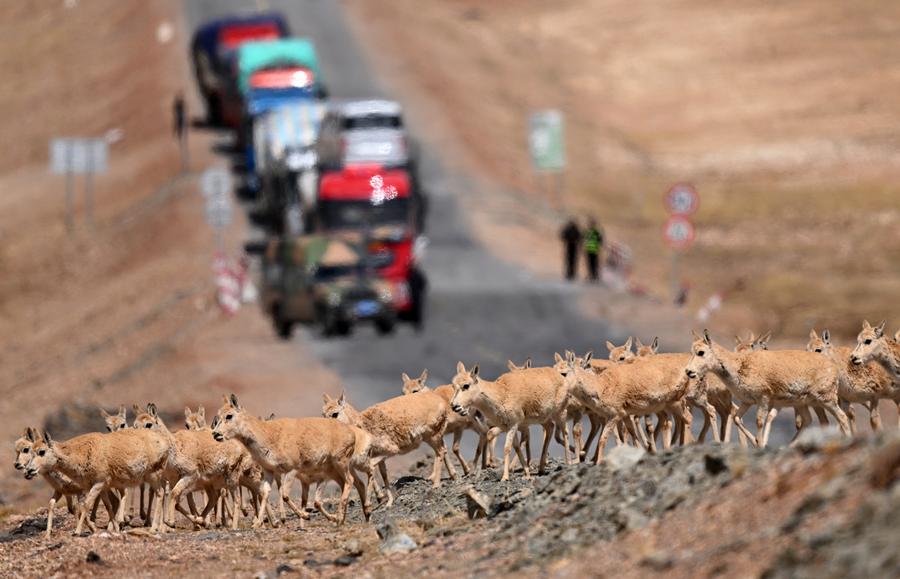* China strives to establish the world's largest national park system by 2035.
* In 2021, China established its first batch of national parks, spanning a protected land area of 230,000 square km.
*To better protect wildlife species and their habitats, China also designated 49 candidate areas, covering around 1.1 million square km, as national park space.
CHANGCHUN, May 22 (Xinhua) -- Across plateaus, mountains, and rainforests, wildlife is rebounding in China as the country strives to establish the world's largest national park system by 2035.
Ranging from the likes of Hainan gibbons to Tibetan antelopes, wildlife populations have increased in the country's national parks, an achievement worth celebrating on the International Day for Biological Diversity, which falls on May 22.

This screen image captured on July 26, 2023 at the Suiyang bureau branch of park administration of the Northeast China Tiger and Leopard National Park in northeast China's Heilongjiang Province shows a wild Siberian tiger traced by an infrared camera. (Xinhua/Dai Jinrong)
Deep inside a dense forest in northeast China, a Siberian tiger cub was cuddling and playing with its mother.
This heartwarming scene in the Northeast China Tiger and Leopard National Park (NCTLNP) was streamed in real-time on an intelligent screen at the park's control room.
Such new technologies have transformed biodiversity conservation in China. In the NCTLNP, which spans over 14,000 square km, it takes just a few seconds to trace a wild Siberian tiger, thanks to the park's network of more than 20,000 infrared cameras.
Situated in northeast China's Jilin and Heilongjiang provinces, the park began trial operations in 2017 and was officially established in 2021.
Both the park's key and sensitive areas are covered by an integrated intelligent monitoring system that collects and records wildlife data.
"Last year, 20 Siberian tiger cubs and 15 Amur leopard cubs were born in the park. This is truly a surprise, considering that in 1998, there were only about 12 wild Siberian tigers in China," said Feng Limin, deputy director of the monitoring and research center for Siberian tigers and Amur leopards under the National Forestry and Grassland Administration.
Also known as the Amur tiger, the Siberian tiger is one of the world's most endangered animals and a flagship species of the forest ecosystem, mainly living in Russia's Far East and northeast China. About 500 Siberian tigers are believed to exist in the wild today.

Forest rangers patrol the Bawangling area of Hainan Tropical Rainforest National Park in south China's Hainan Province, Oct. 18, 2023. (Xinhua/Zhang Liyun)
China attaches great importance to biodiversity conservation, as evidenced by it being among the first countries to sign and ratify the Convention on Biological Diversity.
In 2021, China established its first batch of national parks, spanning a protected land area of 230,000 square km.
These parks, namely Sanjiangyuan National Park, the Giant Panda National Park, the NCTLNP, Hainan Tropical Rainforest National Park and Wuyishan National Park, are home to nearly 30 percent of the country's key terrestrial wildlife species.
The progress these national parks have made in protecting biodiversity is evident when considering the numbers involved.
The population of Hainan gibbons, a rare primate that lives in Hainan Tropical Rainforest National Park, had risen to 37 in 2022 from 13 in 2003. Sanjiangyuan National Park, meanwhile, is now home to more than 70,000 Tibetan antelopes, in sharp contrast to less than 20,000 in the 1990s.
To better protect wildlife species and their habitats, China also designated 49 candidate areas, covering around 1.1 million square km, as national park space, according to a spatial layout plan made public in 2022.
There are more than 5,000 wild vertebrate species and 29,000 types of higher plants in these candidate areas, which are expected to incorporate over 80 percent of China's strictly protected fauna and flora.

Pregnant Tibetan antelopes move across the Qinghai-Tibet highway in Hoh Xil, northwest China's Qinghai Province, May 29, 2023. (Xinhua/Zhang Hongxiang)
Notably, the Qinghai-Xizang Plateau, which is the highest plateau in the world, has 13 candidate areas. They cover an area of about 770,000 square km and account for 70 percent of the total area of national park candidate areas.
Over the years, Qiangtang Nature Reserve in southwest China's Xizang Autonomous Region, one of the candidate areas, has been ramping up efforts to improve its ecological protection measures and strategies.
At an average altitude of over 4,500 meters, wildlife rangers in this nature reserve brave thin air and blizzards to patrol protected areas and monitor wildlife. To their delight, the number of wild animals such as Tibetan antelopes and yaks has increased significantly in this region.
"The construction of the national park system greatly improves the protection of biodiversity and safeguards the authenticity and integrity of the ecosystem. National parks are becoming ideal homes for many rare wild animals," said He Xingyuan, a researcher at the Institute of Applied Ecology of the Chinese Academy of Sciences.
(Video reporter: Si Xiaoshuai, Shao Meiqi, Tenzin Nyida, Jiangfan; Video editors: Zhang Qiru and Zhang Yuhong)




 A single purchase
A single purchase









